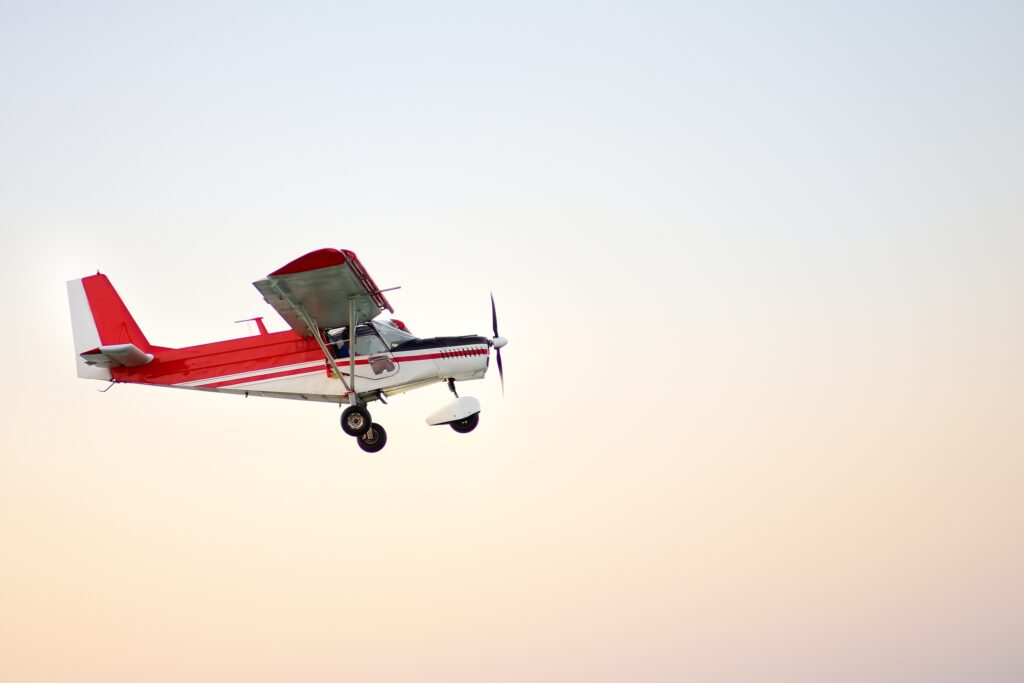By: Michelle Duquette, AG Operations Ambassador
The FAA’s Notice of Proposed Rulemaking (NPRM) for Part 108 Beyond Visual Line of Sight (BVLOS) drone operations marks a pivotal advancement in modernizing the National Airspace System (NAS). Yet, as the rule moves toward implementation, it’s crucial to address habitual language ambiguities and raise the accountability bar for anyone entrusted with operational decision-making.
As a former licensed Aircraft Dispatcher with deep roots in operational control and safety, roles that hinge on clear communication and regulatory precision, I recognize the historic opportunity this NPRM presents. I’ve selected six NPRM examples that highlight where we have an opportunity to maximize safety and public trust with clear, actionable regulatory language.
Threading the Needle: Performance-Based Does Not Mean Vague
The FAA recognized years ago that industry-developed technology reflective of current day state-of-the-art tools and methodologies is a logical and more effective path to NAS evolution. Over the last several years of rulemaking, the FAA has strengthened its technology partnerships with industry by learning how to craft enterprise-level regulation without restricting the creativity and technical capability of its customers.
The idea is to enable industry to use their own innovation, deep technical skills, and resources to achieve an outcome that satisfies the FAA’s need for carefully derived performance boundaries within the NAS.
They tell you what you need to do, but not how you do it.
It’s a shift from prescriptive regulation driven by years of smaller successes resulting from these partnerships that built trust, knowledge, and clarified a new level of government-industry relationship value.
Highlighting the MOSAIC (“Modernization of Special Airworthiness Certification) transition will provide a clear example of the difference. Prior to MOSAIC:
- The LSA standard (14 CFR § 1.1) set fixed, prescriptive limits:
- Max gross takeoff weight: 1,320 lbs (land), 1,430 lbs (seaplane)
- Max stall speed: 45 knots CAS
- Seats: 2
- Single engine, fixed gear
- Manufacturers had to comply with a checklist of specific design features and operational limits, limiting innovation or alternative designs.
Under MOSAIC:
- No more fixed max weight: Instead, max takeoff weight is determined by performance (stall speed), not a set number.
- Broader eligibility: MOSAIC allows more types (e.g., some 4-seat aircraft) if they meet performance requirements.
- Performance-based compliance: If an aircraft demonstrably meets safety outcomes (like stall speeds and handling), it qualifies. It can have more seats, advanced features, or even new technologies and still achieve certification as long as it meets the performance requirements.
Manufacturers and operators can now use novel materials, propulsion systems, and improved safety features without constantly seeking regulatory exemptions.
The focus is on the result demonstrated through flight characteristics and safety performance rather than narrowly defined design features.
Here are a few examples of how the FAA has applied performance-based regulation to enable industry to meet government performance requirements without restricting their approach.
| Performance-Based Language Examples | CFR Section(s) | Date Effective/Published | Link |
| MOSAIC Rule for Light Sport Aircraft | 14 CFR Parts 21, 61, 91 | Final Rule July 17, 2025; Effective Oct 22, 2025 | https://www.faa.gov/newsroom/MOSAIC_Final_Rule_Issuance.pdf |
| Helicopter Operations Rule Update | 14 CFR Parts 27, 29, 139 | Final Rule Oct 21, 2024; Helicopter Routes Oct 1, 2025 | https://www.federalregister.gov/documents/2024/10/23/2024-24531/airworthiness-directives-various-helicopters |
| Part 23 Rewrite (Small Airplane Certification) | 14 CFR Part 23 | Published Dec 30, 2016; Effective Aug 30, 2017 | https://www.federalregister.gov/documents/2016/12/30/2016-30246/revision-of-airworthiness-standards-for-normal-utility-acrobatic-and-commuter-category-airplanes |
Scalable BVLOS Operations
The NPRM frequently touts “scalable BVLOS operations,” a very exciting, yet undefined, phrase. To any one of us, “scalable” could mean more drones, wider areas, higher airspace ceilings, crossovers into adjacent airspace or increased fleet management automation. But what exactly does the FAA intend this phrase to mean? Does it mean the capability to operate fifty drones at once or to double a geographic footprint with minimal new approvals? This ambiguity invites inconsistent operational approaches (safety flag!) and compliance standards challenges.
Recommended Approach to Clarity:
- Example: “Scalable BVLOS operations” means operations capable of safely increasing the number of simultaneously controlled drones to a minimum of 50 units or 80% of safe UAS traffic volume threshold in a geographic zone or grid, ensuring at least 95% communications reliability.
- Example: “Scalable” also refers to expanding operational areas or complexity (such as automated detect-and-avoid integration) by at least 200%, subject to incremental FAA review and validated safety benchmarks.
Adequate Communications Coverage

The rule requires “adequate communications coverage” but fails to provide technical or operational thresholds. In aviation, every dispatcher and pilot knows that ambiguity here could mean the difference between seamless control and information blackout.
Recommended Approach to Clarity:
- Example: Maintain command and control link availability above 99% during all operations, with end-to-end latency not exceeding 250 milliseconds under expected conditions.
- Example: Require redundant data links with signal strength of no less than -85 dBm throughout the operation area and seamless failover protocols (like standards in critical telecom—this shouldn’t be different).
Industry Consensus Standards
The NPRM references “industry consensus standards” for critical functions, but does not specify who sets these standards, how consensus is reached or how updates are governed. However, there are existing and very effective precedents for convening industry to reach consensus on standards recommendations to the FAA that are still in use today. Here is where the FAA recognizes these paths as acceptable.
Recommended Approach to Clarity:
- Example: “Industry consensus standards” means documents developed by recognized organizations (ASTM International, RTCA, Aviation Rulemaking Committees), reflecting broad stakeholder input, and in most cases outside of ARCs, updated on a regular calendar cycle.
- Example: Alternatively, standards must be ratified by formal committees with government, industry and third-party stakeholders and made publicly available for comment.
Population Density Categories
For operations over people, the NPRM uses “population density categories” and “open-air gathering” in ways that invite confusion, especially for non-aviation stakeholders. How many people per area triggers new safety requirements? “Large gathering” is a phrase open to wildly different interpretations. The increased FAA workload invited by “FAA determination” language is untenable given the volume of anticipated need to handle individual requests.
Recommended Approach to Clarity:
- Example: “Population density categories” should be tied to explicit person-per-square-meter benchmarks: (e.g., Category 1: <1 person/m²; Category 5: >9 persons/m²).
- Example: “Open-air gathering” means assemblies of more than 100 individuals in contiguous outdoor areas exceeding 1,000 square meters, such as a public concert or sporting event.
Set a mark, make it waiverable, learn, revise as needed.
Mitigating Hazards & Operational Mitigations
Operators are told to identify and “mitigate hazards,” but with no catalog of expected hazards or minimum requirements for risk reduction. With all of the mathematics, algorithm development and testing that has been accomplished over the last decade to create FAA Safety Risk Management (SRM) hazards and confidence/likelihood tables for introducing UAS into the NAS, we have an opportunity to sharpen this messaging considerably. The FAA knows how to write a performance-based risk assessment and should be providing the next levels of detail for original equipment manufacturers (OEMs) and operators.
Recommended Approach to Clarity:
- Example: “Mitigating hazards” means addressing all risks on a FAA-approved hazard list, including loss of command link, system failures and airspace intrusions among others, with technical (e.g., redundant hardware, geo-fencing) and procedural (e.g., pilot training) mitigations.
- Example: “Operational mitigations” include demonstrable combinations of procedure, technology and redundancy verified to reduce risk to compliance levels in FAA’s safety performance targets.
Familiarity with Airspace and Flight Restrictions & Management Certification
Currently, the NPRM allows Operations Supervisors and Flight Coordinators, the people charged with direct operational control, to be “familiar” with airspace and flight restrictions. Unlike legacy roles such as Aircraft Dispatchers or Air Traffic Control Supervisors, however, there’s no standard for how that familiarity is achieved or proven. In aviation, we know that trusting “familiarity” without objective standards is insufficient when safety is on the line. In fact, it can be unsafe.
Dispatcher Certification: A Relevant Precedent
The 1999 FAA update for Aircraft Dispatcher certification set robust standards by mandating formal training, written and practical tests, recurrent education and FAA oversight. Dispatchers, like drone ops supervisors, hold the keys to real-time operational decisions and flight safety. The dispatcher’s rigorous certification regime remains a model of clarity, professionalism and public protection. Many Business Aviation flight following centers have adopted it.
Recommended Approach to Clarity:
- Example: “Familiar with airspace and flight restrictions” means completing a standardized FAA-accredited training program covering current airspace structure, airspace management tools and techniques such as NOTAMs, TFRs, emergency protocols, low altitude airspace operations management like UAS Traffic Management (UTM) services, and that can be renewed through recurrent training programs every 12 months.
- Example: Operations Supervisors and Flight Coordinators should be required to hold an FAA-issued certificate of competency for BVLOS, analogous to Aircraft Dispatcher certification, verified by examination and subject to recurrent oversight.
Accountability and the Danger of Buzzwords
Aviation safety cannot rest on subjective interpretations or “buzzword salads” that sound visionary but mean little in practice. For those without deep aviation backgrounds, ambiguous words open the door to safety, compliance, and legal risks that jeopardize the reputation and future of the unmanned ecosystem.
For industry professionals, both legacy and new, formal, documented qualifications must be non-negotiable for roles entrusted with operational control.
This is not an esoteric argument. When ambiguity flourishes, enforcement falters, industry adopts divergent standards, and public safety is compromised.
The National Retail Federation (NRF), Texas Commission On Law Enforcement (TCOLE), The National Fire Protection Association (NFPA), and The American Physical Therapy Association (APTA) approach their operational control roles with certifications, standardized training or credentialing. It’s a proven practice. Why wait for failure when the learning is already there to be applied from the start?
Recommended Language for the Final Rule
- Replace ambiguous terms (“scalable,” “adequate,” “familiar,” “mitigate,” “population density categories”) with quantifiable definitions, as outlined above.
- Require formal, FAA-administered certification for all flight management personnel allocated operational control authority, modeled after Aircraft Dispatcher standards.
- Mandate explicit, measurable thresholds for communications, hazard mitigation, and operations over people.
- Avoid undefined “consensus standards” and instead refer to existing practice, specify governance, update intervals, and describe ratification requirements.
- Ensure that every requirement is stated with clarity sufficient for both legacy aviation professionals and new entrants with limited prior experience.
The Professional Drone Industry Needs Clear Regulatory Language
The future of unmanned aviation hinges on the words we use to set expectations, regulate behavior, and protect the public. Ambiguous language and undefined buzzwords may inspire in the short term, but can erode safety and trust over time. The FAA’s final BVLOS rule should lead the global industry by exemplifying clarity, accountability, and technical rigor, the qualities that have always defined the NAS at its best. Let’s keep the skies, and the regulations governing them, clear.

